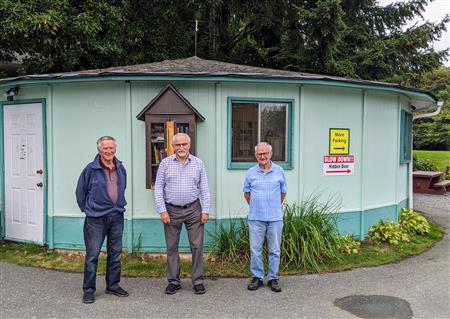
Celebrating 50 Years of Service - The Ladysmith Golf Course Story
Author: Ed Nicholson, Club Historian
Introduction: The Rotary Club of Ladysmith was formed in 1970 and received its Charter on September 31. It was and still is very active and took on some major projects in its first 10 years, but nothing as big as the commitment to build a community Golf Course. Ed Nicholson spent many hours in the archives researching this story with the help of Andy Bohay. Here is the story of the project that is still an important part of Ladysmith, even if it did nearly kill the Club. - Gerry Beltgens, Club Public Image
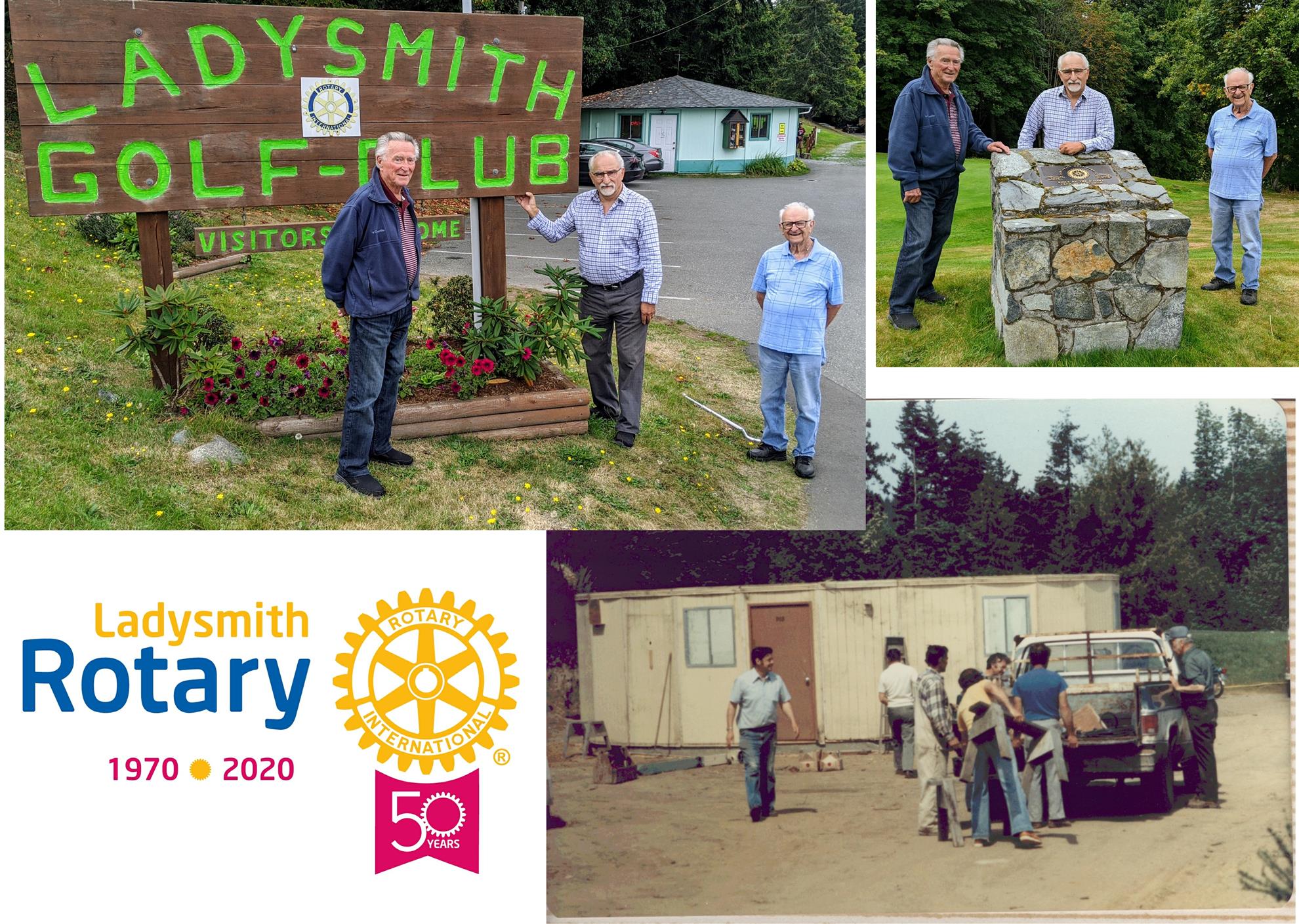
Continued - Celebrating 50 Years - The Ladysmith Golf Course Story
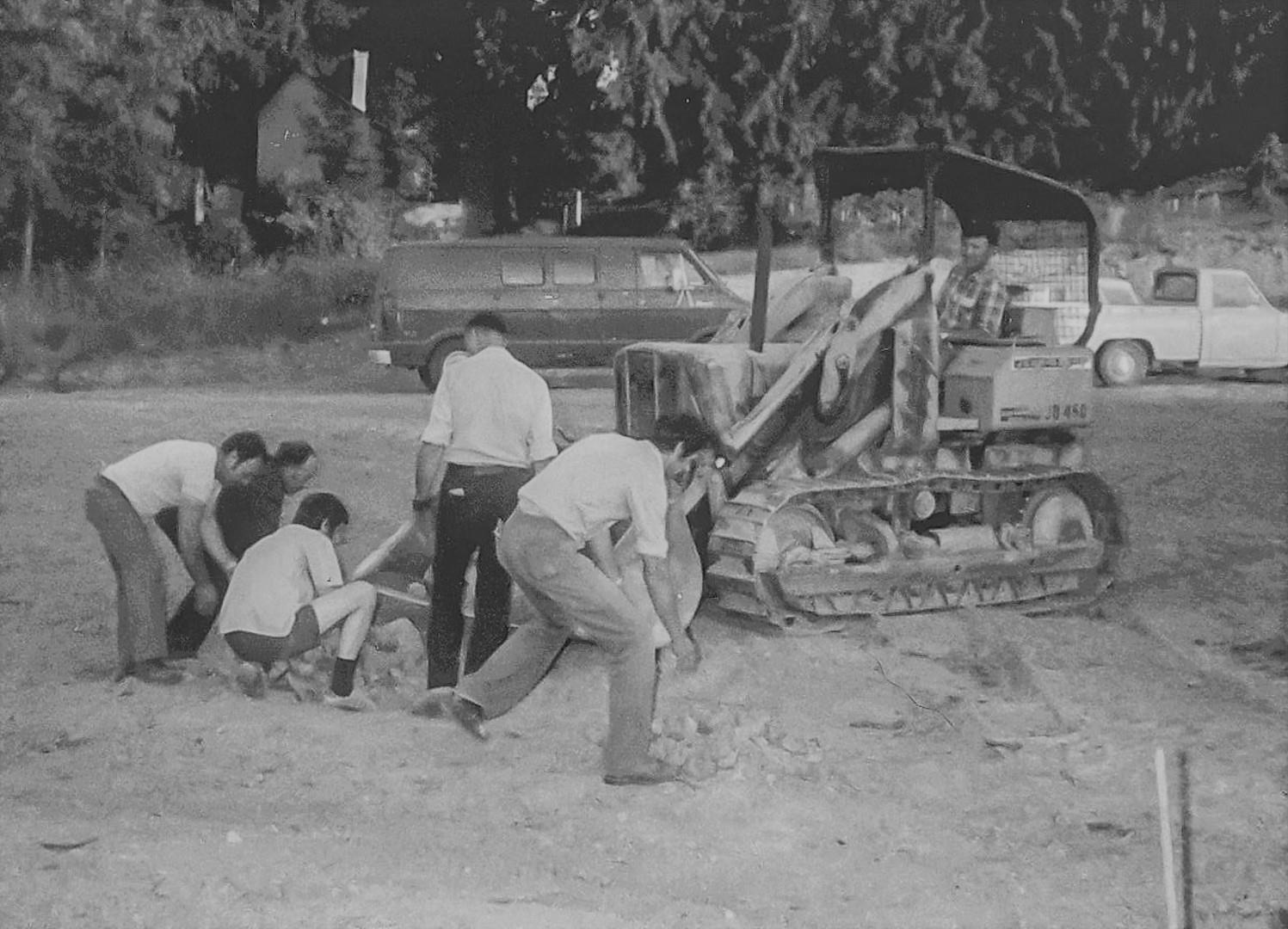 The Ladysmith Golf Course was a project conceived by Legion Branch #171, designed by Ernie Brown and built by the Rotary Club of Ladysmith. It is a remarkable story of what a community can achieve when it keeps its collective mind on the goal and sets individual differences aside.
The Ladysmith Golf Course was a project conceived by Legion Branch #171, designed by Ernie Brown and built by the Rotary Club of Ladysmith. It is a remarkable story of what a community can achieve when it keeps its collective mind on the goal and sets individual differences aside.
 The Ladysmith Golf Course was a project conceived by Legion Branch #171, designed by Ernie Brown and built by the Rotary Club of Ladysmith. It is a remarkable story of what a community can achieve when it keeps its collective mind on the goal and sets individual differences aside.
The Ladysmith Golf Course was a project conceived by Legion Branch #171, designed by Ernie Brown and built by the Rotary Club of Ladysmith. It is a remarkable story of what a community can achieve when it keeps its collective mind on the goal and sets individual differences aside.Clearing operations for a 9 hole Par 3 golf course in Ladysmith began in the first week of August, 1975. Jim Taylor of the Royal Canadian Legion # 171 had originally proposed the project to the Town Council in October of 1973, where it received enthusiastic support. The course was initially conceived as an 18 hole course to be built on the 12 acres of park land that was available between Coronation Shopping Centre and the area already developed near Holland Creek as a baseball-soccer field. According to Taylor, the estimated cost of the project was $200,000. The Legion had $10,000 available and a commitment from the provincial government equivalent to one third of the cost, regardless of whether it is cash, land or services. It was also hoped that Malaspina College Vocational Division’s heavy equipment operator’s course would do the preliminary work on the ground.
The Ladysmith Town Council under Mayor Kate Grouhel was very supportive of the project and it was approved in principle. Council also agreed to pay for the cost of an engineering study into the feasibility of the plan. "It’s for young and old. Just what we have been crying for,” Alderman Bob Stillin enthused. The Mayor agreed. “The land on which the course would be built was practically unusable for any other purpose. In fact, I’m surprised that it can be done at all!”
Community support was also strong. Editor John MacNaughton wrote: The Chronicle believes that such a golf course in that location would be both recreationally and esthetically satisfying. Golf is becoming increasingly popular, and the sight of a well-tended golf course from the Trans-Canada Highway would do much to create a pleasing image for the community. 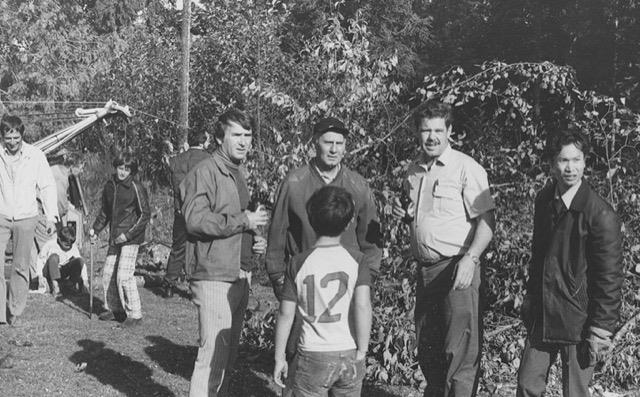

However, a major remaining hurdle for the Legion was a lack of manpower to construct the course. It was decided to approach the Ladysmith Rotary Club (established1970) for assistance. The fledgling club had already made its presence known in the community by constructing a boat ramp, baseball team dugouts in Holland Creek Park, and purchasing a fifteen passenger van for the Ladysmith Secondary School. Although Ladysmith Rotary had less than 30 members, the club readily agreed to take on this enormous project. Rotary Charter Member Pat Bryan was appointed to chair the Golf Course committee, as he was an “experienced” golfer. Little did Bryan know that he and his fellow Rotarians were committing themselves and their families to more than six years of weekend labour to construct a golf course and clubhouse for the community.
In a recent interview, Pat Bryan recalled that there were major problems with this huge enterprise right from the start. The club learned that the heavy equipment program at Malaspina College had withdrawn their offer, saying the proposed site of the golf course was unsuitable and unsafe for student training on heavy equipment. Frustrated but determined, Bryan appealed to the newly appointed College president Carl Opgaard, with whom he shared his notes of the meetings and telephone calls where the offer by the former Vocational School had been made. President Opgaard agreed to honour the commitment and a few months later, Heavy Equipment Instructor Howard Besse and eight students “including one young lady” began the work of shaping the course. Pat Bryan recalls the college students used graders, back hoes, cats, scrapers and frontend loaders to move more than 50,000 yards of fill – “All at absolutely no cost!”
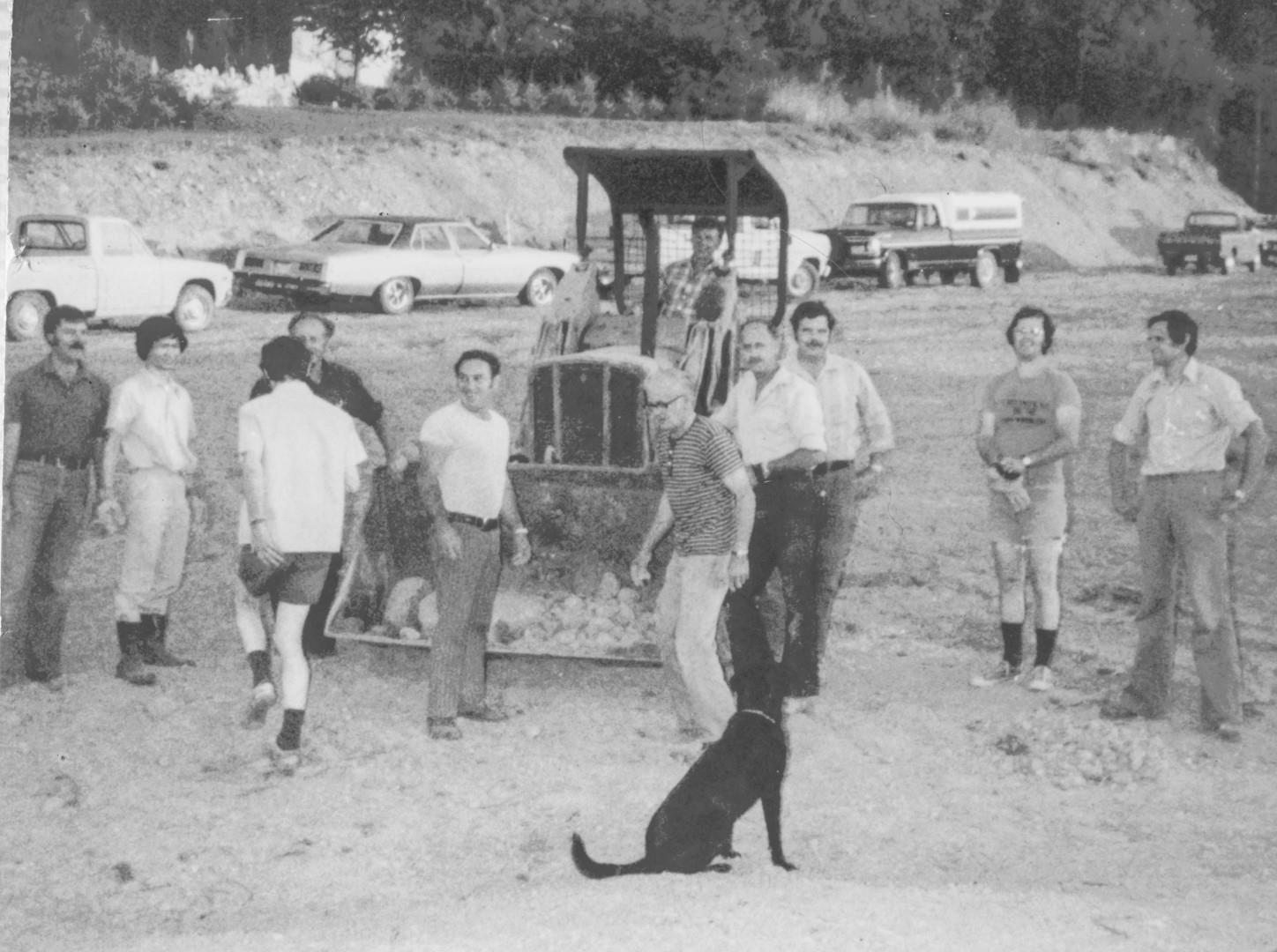 Bryan and some of the other Rotarians visited the site and agreed with the Town report that the original Legion proposal for an 18 hole course was not feasible. Bryan told me “I even had a professional course designer from Vancouver look at it and afterwards he told me that if we ever found suitable land for a course, give him a call!” As planning proceeded, it was decided that due to space, time and financial limitations, a 9 hole would be more feasible. Ernie Brown, an experienced golf course architect was hired to design a suitable course.
Bryan and some of the other Rotarians visited the site and agreed with the Town report that the original Legion proposal for an 18 hole course was not feasible. Bryan told me “I even had a professional course designer from Vancouver look at it and afterwards he told me that if we ever found suitable land for a course, give him a call!” As planning proceeded, it was decided that due to space, time and financial limitations, a 9 hole would be more feasible. Ernie Brown, an experienced golf course architect was hired to design a suitable course.“He did a good job,” Pat Bryan told me, “and supplied us with detailed professional drawings for the complete course that we used to construct it.”
Brown’s plan called for the lowering of the elevation by about 13 feet and the soil used as fill.
Another challenge in the course design was how to incorporate the 70 foot deep Holland Creek gully. The problem was solved by placing one hole on the northwest side of the gully with a connecting bridge. Close contact was maintained by Rotary with the Town of Ladysmith, the Fisheries Department, engineers and the Recreation Commission to protect this water resource.
The club at first attempted to clear around certain stands of standing timber, but found this impossible. Instead, the site was cleared and seedlings planted where they would best benefit the course (See map). Crown Zellerback helped to remove some the existing trees, but evergreens which fit into the course design were left. The saleable timber was taken off and much of the cut wood was sold as firewood by Rotary at $25 a truckload.
Once the basic shape of the course had been completed the next task was to install an underground sprinkling system. The installation had to be completed before the fairways and greens could be seeded.
By the end of September in 1978, the club was almost exhausted from months of earth-moving, rototilling, shovelling and raking. Rotarians were also kept busy selling Western Express and Provincial lottery tickets with the support of 49th Parallel and Dunn’s grocery stores, who contributed their ticket profits to the project. The end was not yet in sight.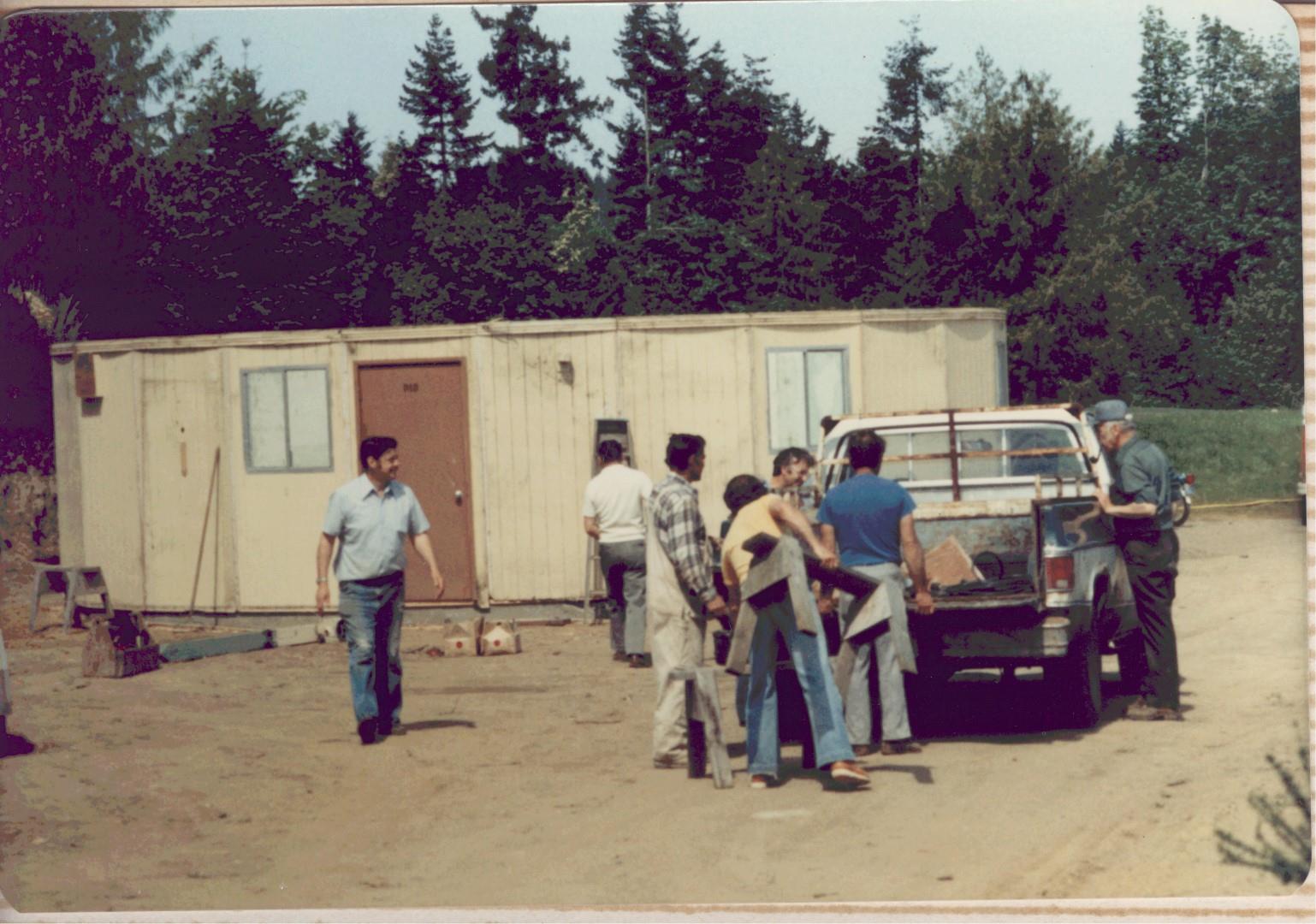
By the end of September in 1978, the club was almost exhausted from months of earth-moving, rototilling, shovelling and raking. Rotarians were also kept busy selling Western Express and Provincial lottery tickets with the support of 49th Parallel and Dunn’s grocery stores, who contributed their ticket profits to the project. The end was not yet in sight.

Ken Mulholland agreed to take on some of the leadership duties to give Pat Bryan a much needed break and it was decided to employ Ross Rivers (who was heavily involved with the construction of the Nanaimo Rutherford Golf Course) to seed the course. Rivers, who held a Professional Golfers Association (PGA) card and later served as club pro, told them that the project was going to take several more years. Normally, he said, it takes about one year for the greens to become well-established and another three years before grass over the remainder of the course is well set.
The greens are oversize to compensate for smaller fairways, and all are elevated to handle runoff water from a nearby residential district. In addition, they are built on a one-foot-deep bed of gravel and the grass is of a special type which permits extremely close cutting. There are no sand-traps. “Those are obstacles that would slow play”, Rivers said, “and it has enough natural hazards already.”
The two holes nearest a large ravine will be the most difficult, he said, because golfers will tee off on one side, aiming for a green on the other. While the holes average about 100 yards in length, Rivers did not feel clearing the ravines would be an easy task for all golfers. Comparing the new course to others in the area, he felt it was closest in characteristics to the Rutherford one, which is also a par three course.
On November 28, 1979, a public meeting was held at the Legion Memorial Hall, organized by the Legion and the Ladysmith Rotary Club. The meeting was chaired by Jim Taylor and 48 people were in attendance. Pat Bryan gave a brief history of the Ladysmith course to date. The main purpose of the meeting was to form a golf club. The meeting elected nine individuals – three legion members, three Rotarians and three community members as club directors with Jim Taylor as President and Marg Weaver as Treasurer. By January, treasurer Marg Weaver indicated 70-plus golfers have signed on, and had hopes that the number would more than double before the opening ceremonies.
The club, which was formed as a non-profit society, contracted with the town to oversee operation and maintenance of the course. It offered reduced rates of $100 a year to those who joined immediately. Non-members were to pay annual greens fees of about $120, and Seniors were offered a reduced rate of $80 a year, or $150 a couple.
Rotary also obtained a former portable classroom from the nearby primary school site and, as you can see from the accompanying photo, completely rebuilt it as a clubhouse - still in use today. Ross Rivers was initially employed to manage the course and when he left volunteers took on the task. Currently it continues to operate as a non-profit society and the course is now maintained by the Town of Ladysmith.
Note: The writer was not able to locate information on the amount of equipment, materials and skilled labour provided both by local businesses and tradesmen, but it is very clear that the project could not have been completed without their generous support.
Rotary Past President Ken Sutherland and Ladysmith Golf Club President Jim Taylor both commented publicly on the involvement of nonRotarians in the golf course construction. Rotary may have been in charge, said Sutherland, but it truly was a community undertaking. Chronicle Publisher Rollie Rose, after watching a dawn to dusk golf course September work party proclaimed in an editorial “Who said there is no community spirit in Ladysmith?”
Rotary Treasurer Bob Bafaro who ‘moonlighted’ as manager of the Canadian Imperial Bank of Commerce in Ladysmith, informed me that at one critical point in the development, all 28 of the club members signed guarantees of $1000 each to ensure ongoing funding for the golf course construction. There was a collective sigh of relief when the Town of Ladysmith came up with a grant so that the loan was not necessary!
During his remarks at the official opening ceremony on June 14, 1980, Rotary President Ivan Gardner stated, The golf course has consumed about $350,000 of effort, yet the sole financing for the project has totalled about $76,000: $10,000 from the Legion, $26,000 to date from the province and $40,000 from the Rotarians through fundraising.
The Ladysmith Golf Course is a prime example of Rotarians living up to their motto. Service above self.
Author Ed Nicholson is a member of Ladysmith Rotary and a researcher with the Ladysmith Historical Society
The photos show the construction of the course and clubhouse. The current photos show three of the original Golf Course Team. Pat Bryan and Bob Bafaro are the last of the original Charter Members that we could locate. The rest have either passed, left town or are in care. All of the photos can be seen in the Golf Club Photo album - Gerry Beltgens
